 2006 Toyota Aurion I (XV40) Dimensions, Size & Specs
2006 Toyota Aurion I (XV40) Dimensions, Size & SpecsMeasurements of the 2006 Toyota Aurion I, engineered for optimal performance and comfort
| Dimensions | |
|---|---|
| Length: | 4825 mm190.0 in15.8 ft |
| Width: | 1820 mm71.7 in6.0 ft |
| Height: | 1470 mm57.9 in4.8 ft |
| Weight Specifications | |
| Curb Weight: | 1550 kg3417 lbs |
| Maximal permitted Weight: | 2100 kg4630 lbs |
| Tire Specifications | |
| Tire Sizes: |
|
The Toyota Aurion I (XV40) is a mid-size sedan produced from 2006 to 2009, offering a spacious and comfortable car for family and executive use. Measuring 4825 mm (189.8 inches) in length, 1820 mm (71.7 inches) in width, and standing at 1470 mm (57.9 inches) tall, the Aurion provides a balanced footprint that combines interior space with easy maneuverability. With a curb weight of 1550 kg (3417 lbs) and a maximum weight of 2100 kg (4629 lbs), it strikes a good balance between sturdiness and efficiency. The Aurion's tire options include 215/60R16 and 215/55R17 sizes, which contribute to overall ride comfort and road handling. This generation Aurion emphasizes smooth driving dynamics, solid build quality, and practicality, making it a significant choice in the mid-size sedan segment during its production years.
Discover the standout features that make the 2006 Toyota Aurion I a leader in its class
Have a question? Please check our knowledgebase first.
The Toyota Aurion I (XV40), produced from 2006 to 2009, measures 4825 mm (189.8 inches) in length, 1820 mm (71.7 inches) in width, and 1470 mm (57.9 inches) in height. These dimensions place the Aurion firmly in the mid-size sedan category, offering ample cabin space and comfortable passenger seating, while maintaining proportions that suit both urban and highway driving. The width and height contribute to its stable road presence without making it overly bulky, balancing interior comfort with exterior maneuverability.
The Toyota Aurion I (XV40) has a curb weight of approximately 1550 kilograms (3417 pounds), which represents the vehicle's weight without passengers or cargo but including necessary operating consumables like oil and a full tank of fuel. Its maximum allowed weight or Gross Vehicle Weight Rating (GVWR) is about 2100 kilograms (4629 pounds). This figure includes the weight of the vehicle itself plus passengers, cargo, and additional load, ensuring safe driving dynamics and adherence to manufacturer specifications for optimal performance and longevity.
Yes, the Toyota Aurion I (XV40) fits comfortably into a standard single-car garage. With a length of 4825 mm (189.8 inches) and a width of 1820 mm (71.7 inches), it fits within the typical garage dimensions, which often accommodate cars up to about 5500 mm (216.5 inches) in length and 2500 mm (98.4 inches) in width. This ensures ease of parking and maneuvering inside most residential garages, providing convenience for daily use and protection from weather conditions.
At 1820 mm (71.7 inches) wide, the Toyota Aurion I (XV40) is competitive within the mid-size sedan segment. This width offers a roomy cabin for front and rear passengers and accommodates comfortable seating without feeling cramped. Compared to rivals such as the Ford Mondeo or Honda Accord of similar years, which typically range from around 1800 mm to 1850 mm in width, the Aurion fits comfortably within the segment norms, balancing interior spaciousness and exterior road presence effectively.
The Toyota Aurion I (XV40) commonly uses tire sizes 215/60R16 and 215/55R17. The 215 mm width provides good road contact for stable handling. The aspect ratios (60 for 16-inch wheels, 55 for 17-inch wheels) help balance ride comfort with responsive steering. The 16-inch tires tend to offer a slightly softer ride, while the 17-inch variants improve cornering and grip. Overall, these tire sizes suit the Aurion’s mid-size sedan dynamics, giving drivers a comfortable and controlled driving experience.
The height of 1470 mm (57.9 inches) for the Toyota Aurion I (XV40) strikes a balance between providing sufficient headroom for both front and rear passengers and maintaining sleek, aerodynamic styling. This height allows comfortable seating for most adults without compromising the vehicle's aerodynamic efficiency, which contributes to reduced drag and improved fuel economy. The lower profile complements the Aurion's sporty sedan styling while preserving interior spaciousness typical for the mid-size segment.
Compared to its predecessor, the Toyota Avalon model that preceded the Aurion in some markets, the Aurion I (XV40) features a slightly larger and heavier build. The Aurion measures 4825 mm (189.8 inches) in length, which is marginally longer than the Avalon XV30 generation at approximately 4820 mm (189.8 inches). The width at 1820 mm (71.7 inches) is comparable or slightly wider, enhancing interior space and road presence. Its curb weight of around 1550 kg (3417 lbs) reflects added safety and comfort features over the previous generation. Overall, the Aurion offers a refined, updated size profile aimed at a more upscale sport sedan appeal.
The Toyota Aurion I (XV40) holds a competitive position among mid-size sedans from the mid-2000s with its dimensions of 4825 mm (189.8 inches) length, 1820 mm (71.7 inches) width, and a curb weight of 1550 kg (3417 pounds). Compared to similar competitors such as the Honda Accord, Ford Mondeo, or Nissan Altima of the same period, the Aurion tends to be slightly longer and similarly wide, with weight reflecting standard mid-size vehicle standards. Its balanced size offers spacious interior comfort and a stable ride, while its weight supports a solid, safe driving experience without compromising fuel economy drastically.
Based on the Aurion I (XV40)'s exterior dimensions—4825 mm (189.8 inches) long, 1820 mm (71.7 inches) wide, and 1470 mm (57.9 inches) high—passengers can expect a comfortable and spacious interior. The carriage width allows generous shoulder room for front and rear occupants, while the length contributes to ample legroom, especially in the rear seats. The sedan layout focuses on maximizing passenger comfort without excessive bulk, resulting in a cabin that suits families and daily commuters looking for both practicality and comfort.
The Toyota Aurion I (XV40), produced from 2006 to 2009, was positioned as a mid-size sedan targeted mainly at markets like Australia and New Zealand. It was essentially a sportier, more luxurious alternative to the Toyota Camry, featuring larger engines, more aggressive styling, and enhanced interior features. The Aurion catered to buyers seeking performance and refinement in a reliable and well-built sedan. It combined comfortable space, solid build quality, and competitive pricing, making it a popular choice in the mid-size sedan segment before being succeeded by newer models.
Discover similar sized cars.
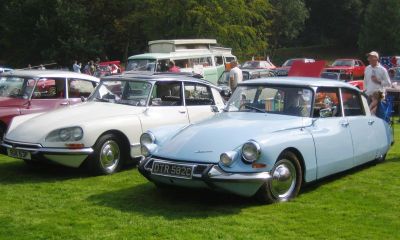
| Production: | 1962-1967 |
|---|---|
| Model Year: | 1962 |
| Length: | 4830-4838 mm190.2-190.5 in |
| Width: | 1790 mm70.5 in |
| Height: | 1470 mm57.9 in |
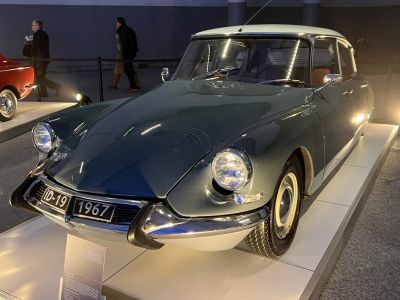
| Production: | 1964-1968 |
|---|---|
| Model Year: | 1962 |
| Length: | 4874 mm191.9 in |
| Width: | 1803 mm71.0 in |
| Height: | 1470 mm57.9 in |
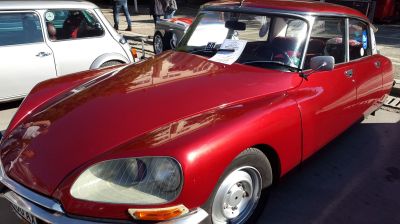
| Production: | 1967-1975 |
|---|---|
| Model Year: | 1968 |
| Length: | 4874 mm191.9 in |
| Width: | 1803 mm71.0 in |
| Height: | 1470 mm57.9 in |
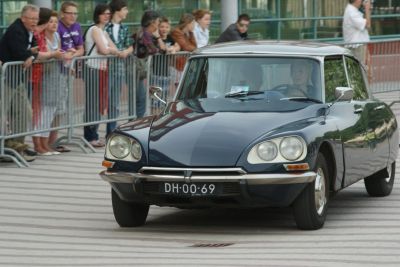
| Production: | 1968-1975 |
|---|---|
| Model Year: | 1968 |
| Length: | 4839-4870 mm190.5-191.7 in |
| Width: | 1791-1800 mm70.5-70.9 in |
| Height: | 1473 mm58.0 in |
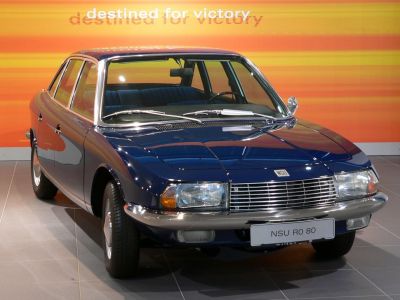
| Production: | 1967-1977 |
|---|---|
| Model Year: | 1968 |
| Length: | 4780 mm188.2 in |
| Width: | 1760 mm69.3 in |
| Height: | 1410 mm55.5 in |
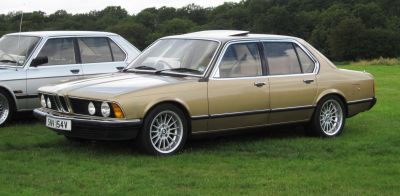
| Production: | 1977-1983 |
|---|---|
| Model Year: | 1977 |
| Length: | 4860 mm191.3 in |
| Width: | 1800 mm70.9 in |
| Height: | 1430 mm56.3 in |
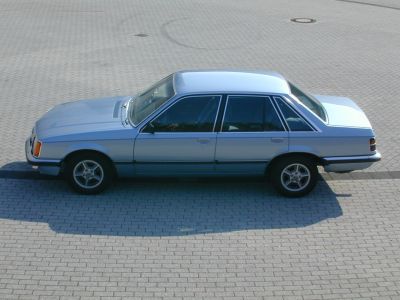
| Production: | 1978-1982 |
|---|---|
| Model Year: | 1978 |
| Length: | 4811 mm189.4 in |
| Width: | 1728 mm68.0 in |
| Height: | 1415 mm55.7 in |
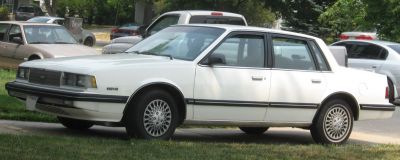
| Production: | 1982-1989 |
|---|---|
| Model Year: | 1982 |
| Length: | 4783 mm188.3 in |
| Width: | 1758 mm69.2 in |
| Height: | 1377 mm54.2 in |
